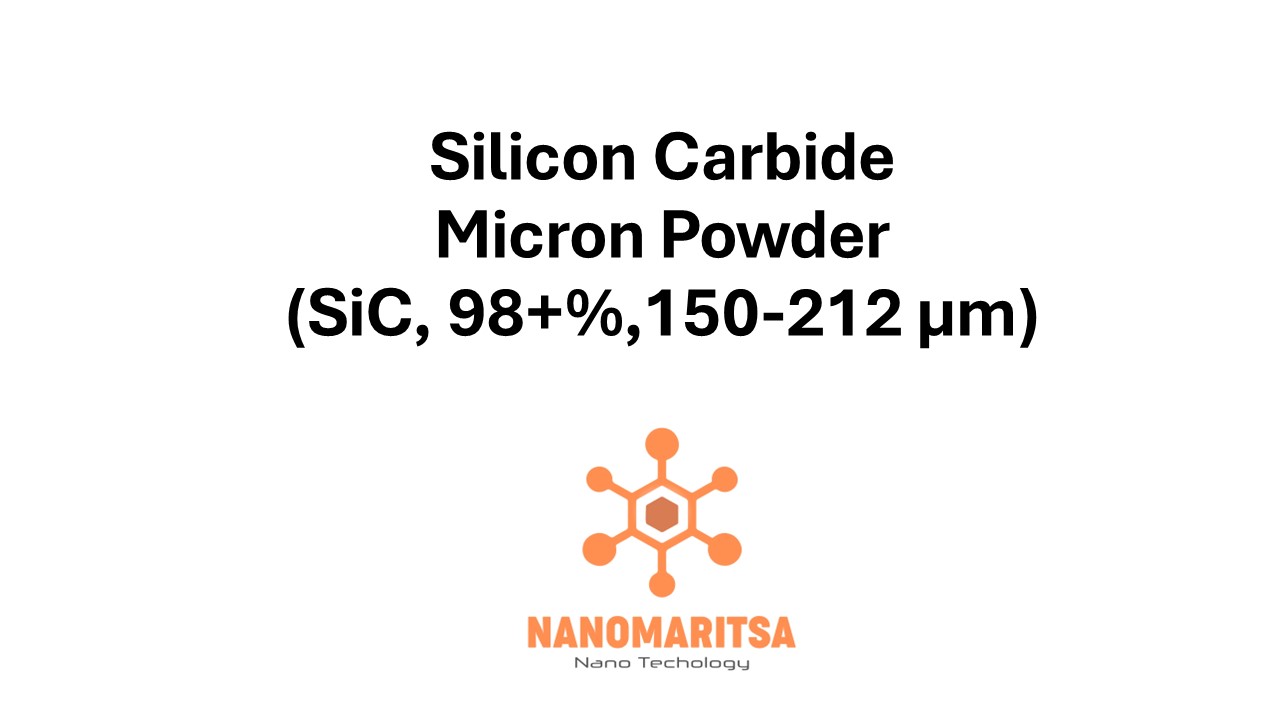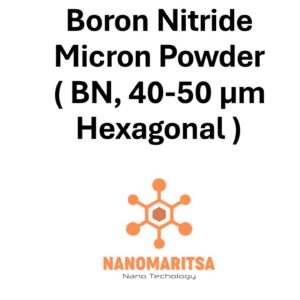Silicon Carbide Micron Powder (SiC, 98+%, 150–212 µm) is a high-performance ceramic material valued for its exceptional hardness, thermal conductivity, and chemical resistance. With a particle size range of 150 to 212 micrometers and a purity of 98+%, this powder is tailored for industrial applications requiring superior durability, thermal stability, and wear resistance. It is widely utilized in industries such as abrasives, automotive, aerospace, and energy systems.
1. Key Properties
Exceptional Hardness Offers outstanding abrasion and wear resistance, ideal for high-stress applications.
Thermal Conductivity Effectively dissipates heat, ensuring stability in high-temperature environments.
Chemical Resistance Resists oxidation and chemical attack, ensuring long-term durability in aggressive conditions.
Mechanical Strength Retains structural integrity under mechanical and thermal stress.
Particle Size (150–212 µm) Optimized for applications requiring larger particles for enhanced mechanical and thermal performance.
Purity (98+%) Combines excellent material properties with cost-efficiency for industrial-scale applications.
2. Applications
Abrasives and Cutting Tools Widely used in grinding, polishing, and cutting applications due to its hardness and wear resistance.
Thermal Management Systems Ideal for heat-resistant coatings, heat sinks, and components requiring effective thermal regulation.
Industrial Ceramics Incorporated into high-strength ceramics for advanced manufacturing and refractory applications.
Automotive Components Applied in brake systems, clutches, and other wear-resistant parts for improved performance and durability.
Aerospace Engineering Supports lightweight, durable components subjected to extreme mechanical and thermal stresses.
Energy Systems Utilized in renewable energy technologies, including high-temperature batteries and fuel cells.
3. Advantages
Superior Wear Resistance Prolongs the lifespan of tools and components in abrasive and high-stress environments.
Thermal Stability Ensures reliable performance under extreme heat, suitable for high-temperature applications.
Chemical Durability Maintains integrity in chemically aggressive and oxidizing conditions.
Optimized Particle Size Enhances uniformity and efficiency in manufacturing and application processes.
Cost-Effective Purity Offers a practical balance between performance and affordability for large-scale industrial uses.
4. Recent Trends and Research
Advanced Abrasive Technologies Research focuses on enhancing SiC for high-performance grinding, cutting, and polishing tools.
Thermal Management Innovations Studies investigate SiC’s application in heat dissipation systems for industrial and electronic systems.
Automotive and Aerospace Applications Efforts aim to integrate SiC into lightweight, durable components for vehicles and aircraft.
Energy Systems Development Research explores SiC’s role in high-efficiency fuel cells and renewable energy systems.
Additive Manufacturing Innovations leverage SiC powders for creating high-performance, precision-engineered parts through 3D printing.
5. Future Prospects
Abrasive Applications SiC will continue to play a key role in developing durable and precise abrasive tools for industrial applications.
Thermal Management Systems Its role in advanced heat dissipation technologies will grow with progress in energy and electronics systems.
Aerospace and Automotive Innovations SiC’s properties will support advancements in next-generation vehicles and aircraft components.
Renewable Energy Technologies The use of SiC in sustainable energy systems will expand with global efforts toward green energy.
Eco-Friendly Manufacturing Sustainable production and recycling methods will enhance SiC’s appeal in environmentally conscious industries.
With its 150–212 µm particle size, 98+% purity, and outstanding hardness, thermal, and chemical properties, Silicon Carbide Micron Powder (SiC) is a versatile material for advanced applications in abrasives, thermal management, and industrial manufacturing. Its reliability and adaptability ensure its significance in modern materials science and engineering.






